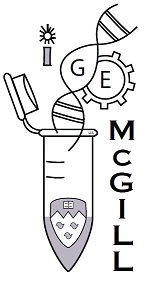Team:McGill
From 2011.igem.org
RayyaAssaf (Talk | contribs) |
RayyaAssaf (Talk | contribs) |
||
| Line 4: | Line 4: | ||
|- | |- | ||
| | | | ||
| - | '' | + | ''Optogenetics involves the use of light to remotely control cellular function via light responsive proteins. It is a promising tool for engineering optical regulation of cellular behavior. Unlike most stimuli, light signals have the advantage of being highly precise with regards to temporal and spatial action as well as having readily tunable intensity. Within cells, a variety of effectors can be controlled using light, including DNA binding proteins, enzymes and mediators in signal transduction. Specifically, our projects focus on building light-responsive biobricks for control of mammalian cells by fusing photo-switchable domains found in plant, algal and fungal light-sensing proteins to such effectors. Mammalian biochemistry is complex and well regulated, necessitating synthetic effectors that can be easily and dynamically adjusted to meet the needs of the application. Photo-switchable systems provide this versatility. '' |
|[[Image:igemteam.jpg|200px|left|frame|McGill IGEM Team]] | |[[Image:igemteam.jpg|200px|left|frame|McGill IGEM Team]] | ||
|- | |- | ||
Revision as of 00:29, 15 July 2011
| You can write a background of your team here. Give us a background of your team, the members, etc. Or tell us more about something of your choosing. | |
|
Optogenetics involves the use of light to remotely control cellular function via light responsive proteins. It is a promising tool for engineering optical regulation of cellular behavior. Unlike most stimuli, light signals have the advantage of being highly precise with regards to temporal and spatial action as well as having readily tunable intensity. Within cells, a variety of effectors can be controlled using light, including DNA binding proteins, enzymes and mediators in signal transduction. Specifically, our projects focus on building light-responsive biobricks for control of mammalian cells by fusing photo-switchable domains found in plant, algal and fungal light-sensing proteins to such effectors. Mammalian biochemistry is complex and well regulated, necessitating synthetic effectors that can be easily and dynamically adjusted to meet the needs of the application. Photo-switchable systems provide this versatility. | |
| Team Example |
| Home | Team | Official Team Profile | Project | Parts Submitted to the Registry | Modeling | Notebook | Safety | Attributions |
|---|
 "
"

